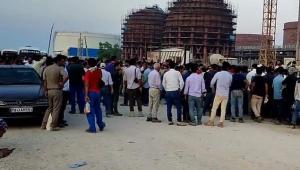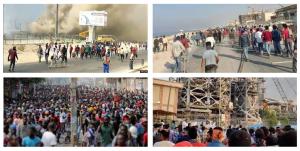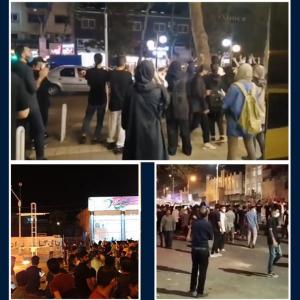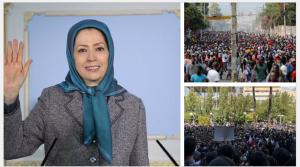Video: Iran Protests, The Significance of Oil Workers’ Strike
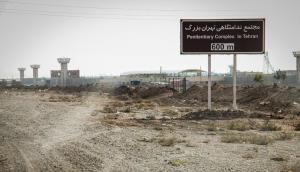
The Great Tehran Penitentiary or Fashafouyeh is one of the most notorious and largest prisons, which covers an area of 110 hectares and is located 32 kilometers south of Tehran.
workers’ strike is considered a turning point, Iranian oil workers joined the nationwide uprising and popular “regime change” demand.
In Tehran, people gathered in different parts of the city, including Vali-e Asr, Shariati, Taleghani, Kargar, Sadeghieh, Palestine, and Lalezar streets, Azadi Square, Ferdows Boulevard, Alauddin and Kashani shopping mall, Molvi and Sadeghieh and chanted “Death to the dictator,” “We are no longer scared, mullahs must get lost,” “This year, is a year of sacrifice, Seyyed Ali (Khamenei) will be overthrown.” They demonstrated and clashed with suppressive forces and plainclothes agents. In some places such as Azadi Square, the agents fired at people.
In Tehran, a group of lawyers gathered in front of the Bar Association building and chanted “Political prisoners must be released,” and “From Zahedan to Sanandaj, my life is for Iran.” They were attacked by suppressive forces who fired tear gas at the crowd.
In the Gohardasht area in Karaj, people and students staged protests and chanted, “Death to the oppressor, be it the Shah or the Leader (Khamenei)” and “Freedom, freedom, death to Khamenei.” Protesters were attacked and the suppressive forces opened fire at them.
In the Fardis district of Karaj, the demonstrators blocked the path of the suppressive agents by setting up roadblocks and lighting fire. In Saqqez, the demonstrations and gatherings by the young protesters led to clashes with the suppressive forces as the youths barricaded the streets.
In Rasht, protesters chanted, “From Kurdistan to Gilan, I will sacrifice my life for Iran” and young people attacked members of the State Security Force who were trying to arrest a woman protester. Demonstrations in Rasht’s Moalem Blvd led to clashes with the suppressive forces. There were similar demonstrations and clashes in Shiraz, Isfahan, Babol, Shahinshahr, Mashhad, and Abadeh.
Students in universities, including Tehran, Tarbiat Moalem in Tehran, Gilan, Rajaei, etc., staged demonstrations. In some cities, including Tehran and Gorgan, students went to the streets and chanted “Death to the dictator”. In Tehran, primary school girls were tear gassed in Tarbiat-2 school.
On Wednesday morning, the strikes by Bazaar merchants and shopkeepers continued widely in Sanandaj, Kermanshah, Baneh, Marivan, Sarpol-e Zahab, Bukan, Dehgolan, Saqqez, and other cities. Parts of Tehran and Mashhad Bazaars also joined the strike. Despite the threats and the arrest of a number of shopkeepers, the security forces could not force them to break the strike.
Workers at a petrochemical complex in Asaluyeh, southern Iran, went on strike. Their colleagues in the Abadan oil refinery also joined them on Tuesday. Four weeks into the major Iran protests, the oil and petrochemical workers’ strike is considered a turning point.
This is not the first time oil workers, mainly contract oil workers, have gone on strike. But previously, they staged protests and demanded their rights. Their demonstrations were quashed, and many deprived workers were arrested or laid off. Yet, Iranian oil workers joined the nationwide uprising and popular “regime change” demand.
Initially sparked due to the death of a 22-years-old Kurdish girl in police custody, Iran protests have now morphed into a revolution, with people demanding nothing less than regime change. Protests have persisted despite the regime’s heavy crackdown.
The first turning point of Iran’s uprising was Saturday’s protests, with students joining them. These protests happened a few days after the bloody crackdown on innocent prayers in Zahedan and after the regime’s supreme leader Ali Khamenei threatened Iranians while praising his oppressive forces.
Iran’s uprising experienced what many consider its second turning point when the contract oil workers began their strike for several reasons:
Considered the regime’s main source of income, the oil industry’s shutdown or partial shutdown delivers a major blow to Iran’s ruling theocracy. In other words, workers control the regime’s most important economic lifeline.
Iran’s workers are among the most oppressed and underprivileged sectors of society. The regime’s corruption and ineptitude have turned Iran’s society, and particularly the workers’ community, into a powder keg. Iran has nearly 15 million workers, who form a large part of the population with their families. Thus, workers joining the uprising seriously threaten the ruling theocracy.
These workers have nothing to lose due to the regime’s corruption and plunder of their wealth. Their participation in the current uprising means protests have entered a new era.
Iranian oil workers have their unions and are among the most organized sectors due to their history of defiance. Thus, they could more easily organize protests and strike, and the rapid spread of strikes is a testament to this fact.
It is worth noting that during the last months of the Shah’s regime, the Iranian oil workers’ strike in 1979 delivered an irreparable blow to the regime. The international community did not sanction the Shah’s regime, yet the workers’ strike seriously damaged its economy.
In a nutshell, the strike by contract oil workers reaffirmed the Iranian people’s unwavering resolve to overthrow the ruling theocracy at any cost. The regime plunders the Iranian nation’s wealth to prolong its rule through the export of terrorism abroad and domestic oppression. The world community should increase its pressure on the regime and help Iranians achieve their rights.
Torturing Prisoners of Uprising in Tehran Prison, Repeat of Crimes Committed in Kahrizak Prison in 2008
Urgent call for the release of political prisoners and those arrested during the uprising, visit of the international delegation to Iran’s prisons.
Since the beginning of the nationwide uprising in Iran, the Judiciary has transferred at least 2,000 detainees to the 6th Brigade of Greater Tehran Penitentiary. Many of them have serious injuries due to severe beatings by the agents or being hit by pellet bullets and need urgent and specialized treatment; but, not only are they not treated, but they face torture and their lives are in serious danger.
The Great Tehran Penitentiary or Fashafouyeh is one of the most notorious and largest prisons, which covers an area of 110 hectares and is located 32 kilometers south of Tehran. This prison lacks minimum living and health facilities. The regime transfers political prisoners to this prison to persecute them. Upon arrival, the prisoner is severely beaten and humiliated. Prisoners who are sick in this prison are doomed to a gradual death.
The Iranian Resistance once again calls for the United Nations, the Human Rights Council, the High Commissioner for Human Rights, and human rights organizations to take immediate actions to secure the release of the prisoners and underscores the need to set up an international mission to visit the prisons and meet with the prisoners, especially the political prisoners.
On Monday, October 10, the 25th day of the nationwide uprising in Iran, more than 1,000 Bushehr petrochemical workers stopped their work in Asaluyeh and joined the uprising while chanting “death to Khamenei.” A part of Kangan Petrorefinery and Hengam petrochemical workers also joined them.
The workers blocked the path of the suppressive forces by lighting fires and piling rocks. The workers chanted, “Death to Khamenei”, “we will fight, we will die, we will take back Iran”, “death to the dictator”, “don’t call it a protest, it is now a revolution” and “this year, is a year of sacrifice, Seyyed Ali (Khamenei) will be overthrown”. The angry workers set fire to a security trailer and completely blocked the Petrochemical junction.
In Tehran, students of Polytechnic and Sohanak Azad University staged a protest and chanted, “Free the imprisoned students”, “My martyred sister, we will continue your path” and “We are no longer scared of guns and tanks”. The students at Rasht Technical College also staged a protest and chanted anti-regime slogans.
Last night, the suppressive forces brutally attacked people in Sanandaj who have actively participated in the nationwide uprising in the past three weeks. The sound of continuous shooting with various kinds of guns could be heard in different areas until this morning. In some areas, the suppressive forces staged house-to-house searches for protesters and arrested them violently while firing tear gas into the houses, which caused respiratory problems for a number of people.
In Kermanshah, Marivan, Salas-e Babajani, Qorveh, Zanjan, Bukan, Dehgolan, and Izeh, people held nightly protests. In Saqqez, the suppressive forces fired tear gas. In Salas-e Babajani and Saqqez, the security forces arrested many protesters.
Mrs. Maryam Rajavi, the President-elect of the National Council of Resistance of Iran, hailed the oppressed workers of Asaluyeh Petrochemical industry who stopped working today and joined the nationwide uprising of the Iranian people. She said, all segments of the Iranian people have joined in unison against the dictatorship and repression and cry out: “Freedom”. This is a revolution until victory.
Shahin Gobadi
NCRI
+33661653231 ext.
email us here
Iran Uprising at a Glance Tuesday, October 11, 2022
Legal Disclaimer:
EIN Presswire provides this news content "as is" without warranty of any kind. We do not accept any responsibility or liability for the accuracy, content, images, videos, licenses, completeness, legality, or reliability of the information contained in this article. If you have any complaints or copyright issues related to this article, kindly contact the author above.

